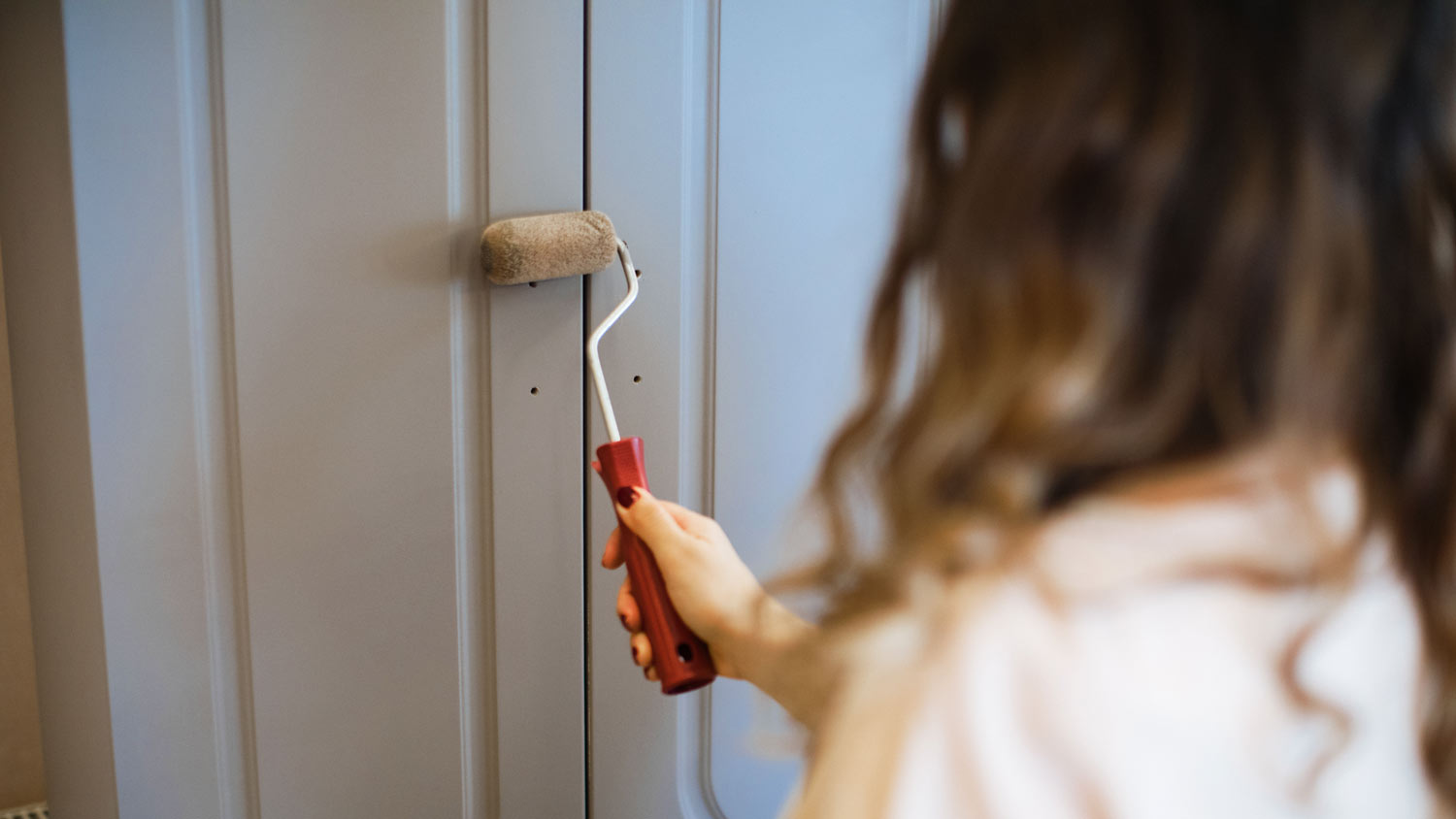
The cost to replace the bottom of kitchen cabinets often isn’t too high, but depending on the damage, a full cabinet replacement can cost thousands.
Follow these DIY steps to install cabinet doors you adore


After you purchase your cabinet doors and customize them to your liking, the final step is installation. Luckily, learning how to install cabinet doors is a relatively simple process that most homeowners can take on by themselves with a bit of guidance. This step-by-step guide will show you how to install cabinet doors like a pro.
If you’re installing new cabinet doors, you’ll first need to remove the old doors and hinges. When doing so, be careful not to damage any boxes or frames. Next, remove any items from your cabinets. Then, clean the cabinet boxes and frames to remove grease or debris. Fresh cabinet boxes won’t need as much cleaning, but it may still be a good idea to wipe them down.
Before installation, you should ensure that your cabinet doors are the correct size and will fit on your cabinet opening. If not, you’ll need to trim the doors down to size, which will require significantly more work and skill or the help of a cabinetry professional.
If your cabinet doors don’t come with pre-drilled hinge holes, the first step in installing cabinet doors is to drill holes into the back of the doors. Measure the hinge size and make sure the hinge holes correspond in size. It’s crucial that you drill the holes correctly and in the right places to provide the necessary support for the hinges. You might consider investing in a jig to help with this step.

Once you drill the hinge holes, you’re ready to mount your hinges to the door. Make sure that you have the proper hinges for your cabinet doors before you install them. Hinges come in various styles and have different functions, and it should be the right fit for your type of door in function and appearance.
Read and follow the instructions that come with your hardware, as some hinges come with special directions. Place the hinges into the hinge holes and drill them firmly into place.
Next, take your cabinet doors and position them accordingly. Note the distance of how much the doors overhang the opening—called the overlay. Determine where you’ll need to attach the hinges based on the overlay. You can use a straightedge to do this step or draw a line with a pencil that indicates where the overlay will stop.
Now, place the mounting plate on the cabinet face frame. Use a pencil to mark a hole through the mounting plate to reference where you’ll need to drill. Make sure to choose the right drill bit for your cabinet door. Drill the pilot hole to a depth of approximately ¼ inch directly where you marked on the face frame.

After you’ve drilled the pilot holes, it’s finally time to mount your cabinet doors. If you can find a helper for this step, it’ll make things much easier. As your helper holds the door in place, screw the hinges to the cabinet. Start with the top hinge and then screw the bottom one.
After installing your cabinet doors, you may find they’re not quite aligned correctly. You can resolve this issue, as most hinges have hardware that allow you to make adjustments so that your doors will be perfectly aligned. Make adjustments until your cabinet doors are installed to your satisfaction.
Lastly, add any finishing touches to your cabinet doors, such as door handles or pulls. Installing cabinet hardware last will allow you to position them accurately. Similar to what you did for the hinges, mark your holes and drill them based on the specific hardware. Then, install the handle or pull according to the manufacturer’s instructions.
Based on responses from 10,400 Angi customers, the most common cabinet repairs involve doors and hinges, with 21% of requests related to cabinet doors and 18% to hinges. Proper installation and regular maintenance can help prevent many of these issues, ensuring that cabinets remain functional and secure over time.
Installing cabinet doors by yourself is a great way to save money. Since it’s a fairly quick and easy DIY project, you won’t have to hire a pro in most cases. However, if you want to save yourself some time and ensure that the job is done correctly, you can always hire a professional cabinet contractor in your area. Hiring a pro to install cabinet doors can cost you anywhere from $70 to $100 per hour.
From average costs to expert advice, get all the answers you need to get your job done.

The cost to replace the bottom of kitchen cabinets often isn’t too high, but depending on the damage, a full cabinet replacement can cost thousands.

Choosing new cabinet hardware is a fun balance of practicality and design. Costs range between under $100 and up to five figures, though, so budgeting and knowing which materials you can afford is key. This cost guide breaks it all down.

Discover the cost to paint kitchen cabinets, including average prices, cost factors, and tips to help you budget and save on your next kitchen update.

Face frame vs. frameless cabinets offer two very different looks for your kitchen. Here are the pros and cons of these two common choices.

You don’t need a professional to teach you how to fill cabinet holes—our guide will have you sanding, filling, and staining like an expert in just a few steps.

When it comes to cabinet remodels, it’s important to consider small details. Learn how to determine the right distance between countertops and upper cabinets.